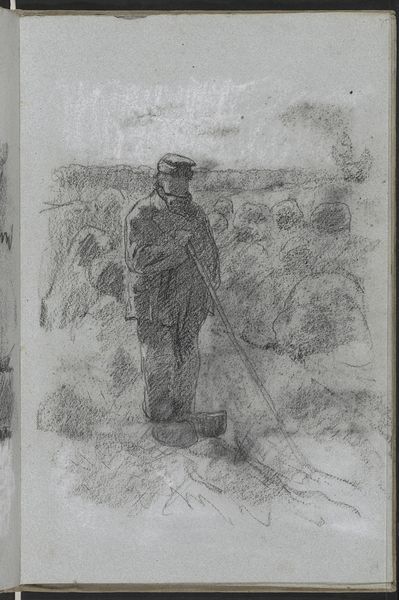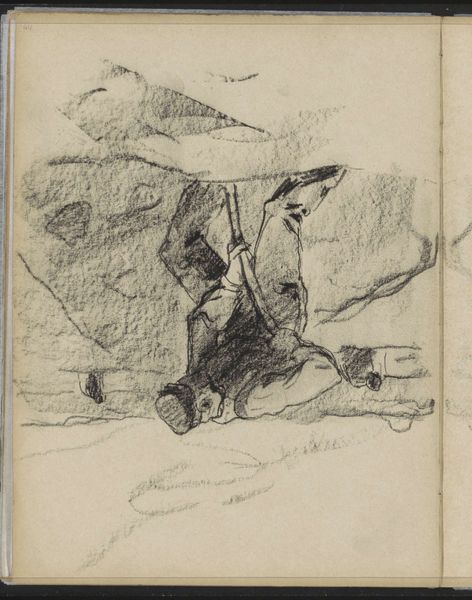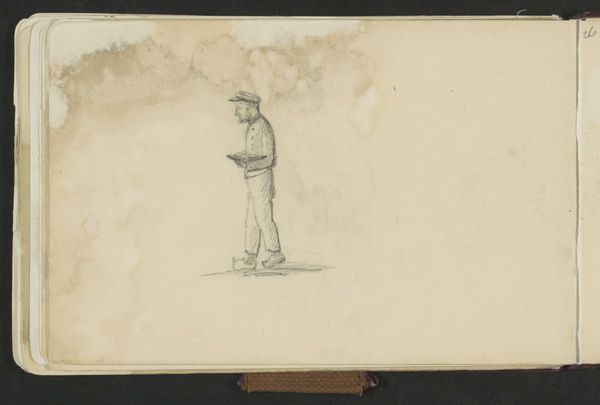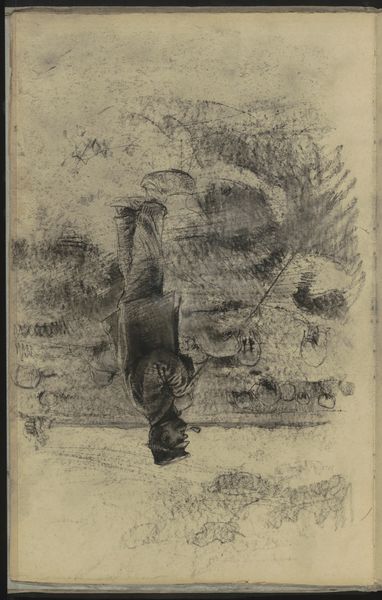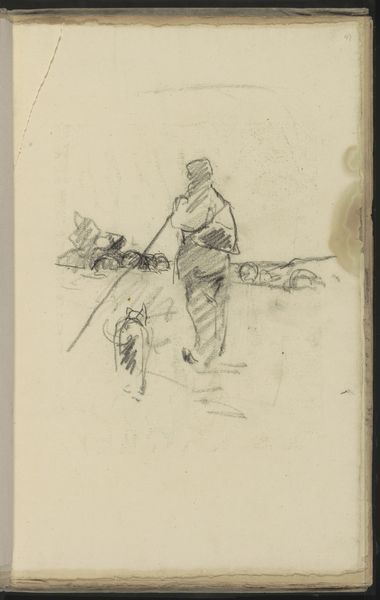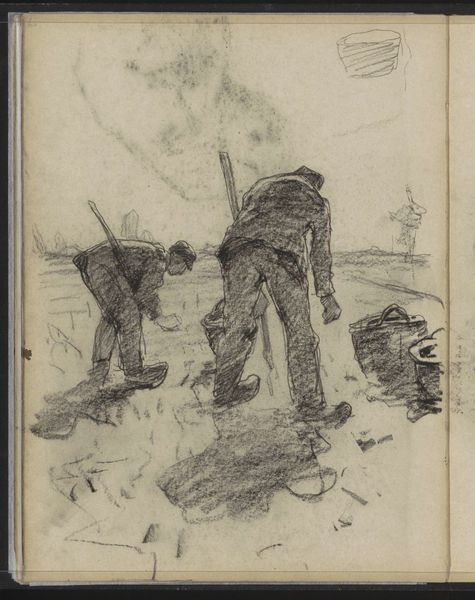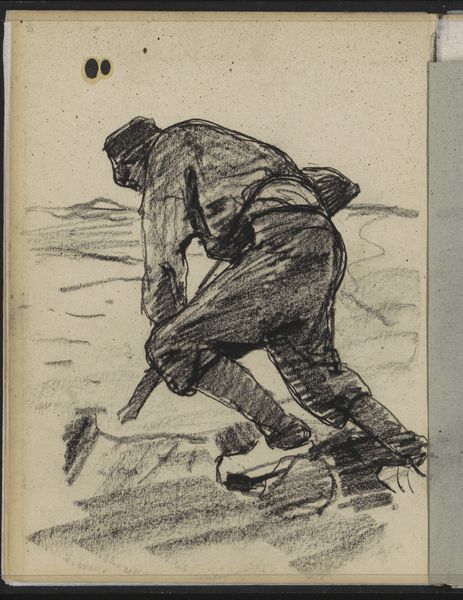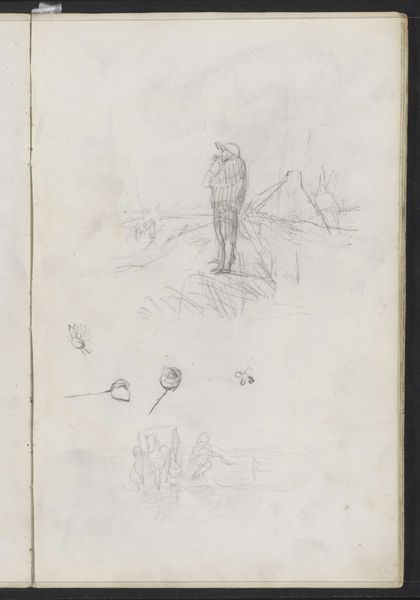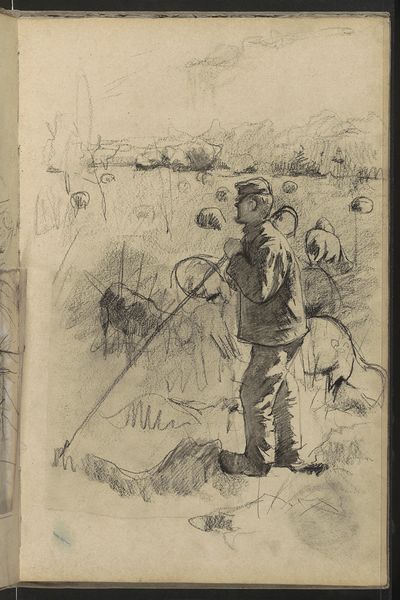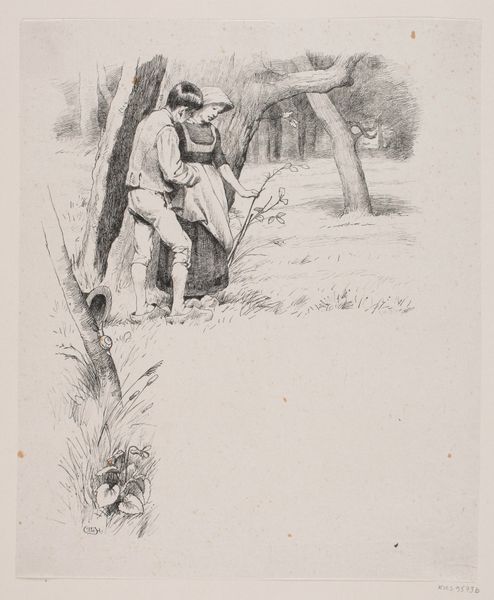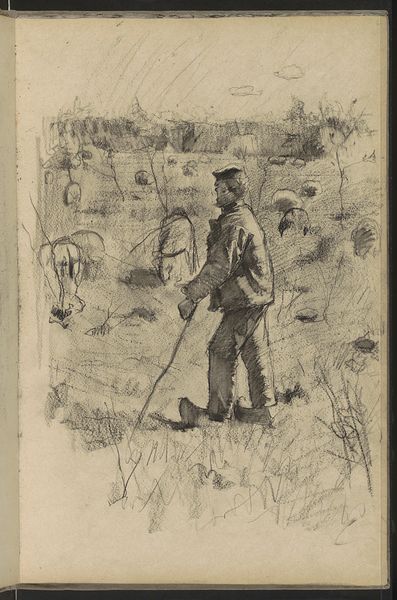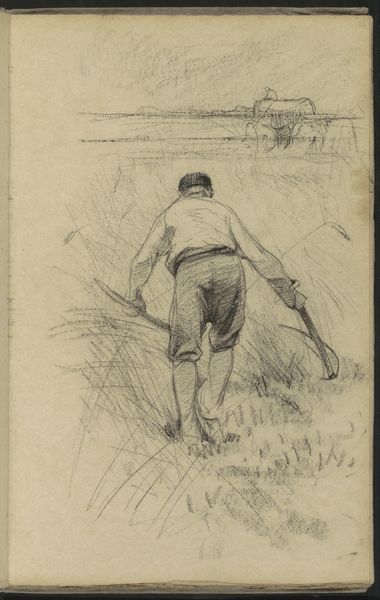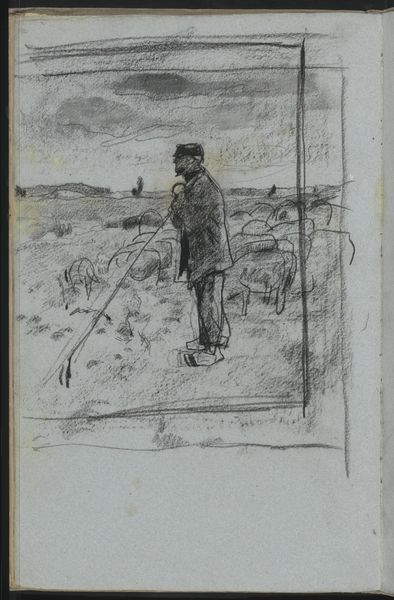
drawing, pencil
#
portrait
#
drawing
#
impressionism
#
pencil sketch
#
landscape
#
pencil
#
realism
Copyright: Rijks Museum: Open Domain
Curator: This pencil sketch, housed here at the Rijksmuseum, is entitled "Schaapherder die op een staf leunt," or "Shepherd Leaning on a Staff" by Willem Witsen, dating from around 1884 to 1887. It feels intimate. Editor: There's a vulnerability in its unfinished quality, isn't there? It looks like a fleeting impression, almost as if Witsen were capturing a memory or a feeling more than a detailed portrait. The way he uses light and shadow creates this mood of solitude. Curator: Indeed. The Impressionist influence is visible here. Witsen belonged to the Amsterdam Impressionism movement. What I find compelling is how he uses a seemingly simple image to reflect broader socio-political themes. The figure of the shepherd, traditionally a symbol of rural idyll and pastoral care, is presented with such stark simplicity. It almost suggests the erosion of traditional ways of life in the face of urbanisation and industrialisation. Editor: Interesting point. The shepherd’s staff, a symbol of authority and guidance, almost looks like it's just there for him to lean on for support. A support because the flock that provides value and livelihood is no more. It feels less like an active tool and more like something he is using as an aid while existing alone on desolate land. It speaks volumes, doesn't it, about changing social roles and individual struggles in late 19th-century Holland. Curator: Absolutely, and even his clothing indicates how the figure straddles this historical transition from tradition to something new and still yet uncertain, influencing the meaning the drawing can contain. His clothing denotes more of a workingman’s clothing rather than clothing alluding to the ‘good shepherd’. Editor: It's the way the light catches his form that draws me back again and again, casting him alone as it makes this work linger. I now know why. It's melancholy with the human experience of finding ourselves, through change. Curator: Seeing how one figure's symbolic weight interacts across artistic styles, schools of thought, materials, and the passage of time always amazes. Editor: It really makes you reconsider a shepherd's symbolic significance as an image beyond that traditional rural context.
Comments
No comments
Be the first to comment and join the conversation on the ultimate creative platform.
